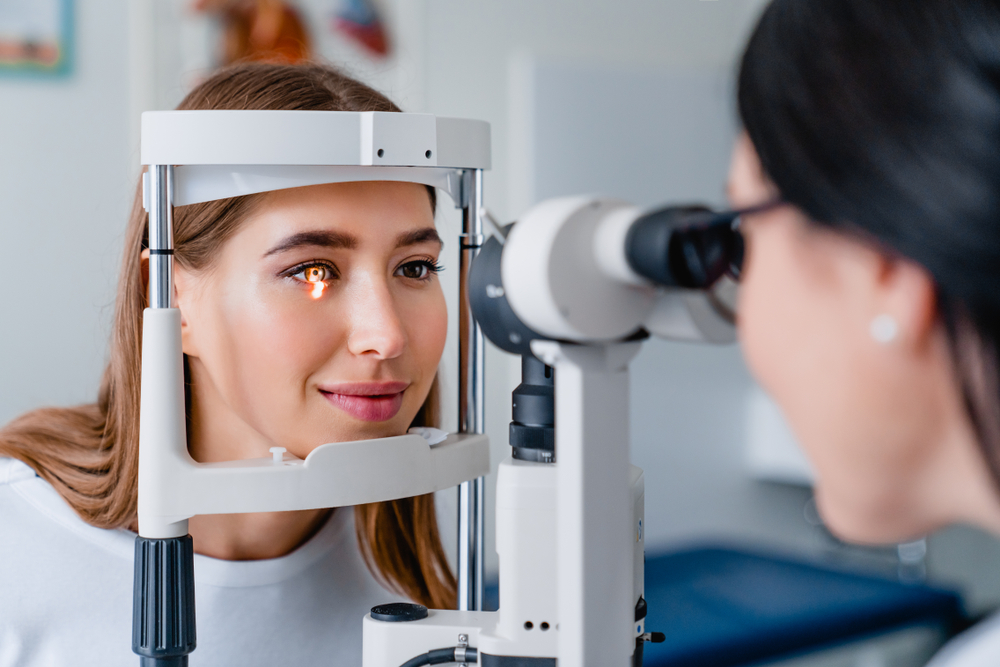
Eye doctors use a variety of tests to diagnose different conditions and diseases. Based on the examination, that might entail watching how a patient’s eye moves. However, it could also involve different types of equipment. A reputable eye specialist will use whatever it takes to prevent problems and improve vision.
Detecting Eye Disease in Adults
The way exams detect eye disease in adults depends on the type of test involved.
Eye Muscle Test
With this, an eye doctor carefully looks at a patient’s eyes to see how well they follow a moving object. From that, they can determine if the individual has poor coordination or perhaps muscle weakness.
Visual Acuity Test
You’ve probably had this test performed many times. For this, a doctor would have the patient stand in front of a charge that features letters in varying sizes at a specific distance away. The letters at the top of the chart are quite large, but moving down, they become smaller.
As part of this eye test, the patient reads the letters out loud first with both eyes opened, followed by reading them with just one eye and then the other eye. The outcome reveals whether the person has low vision, myopia (nearsightedness), or hyperopia (farsightedness).
Refraction Assessment
Normally, light waves bend while passing through the cornea and lens. However, for an individual to see properly, the light must aim toward the retina at the back of the eye. If that doesn’t happen, it means they have a refractive error. Using this exam, an eye doctor can first provide a firm diagnosis.
In addition, this test helps them choose the best method of correction, whether glasses, contacts, or refractive surgery. Either way, the patient will have significantly improved vision. To estimate the prescription required for glasses or contacts, some eye doctors use a computerized refractor.
Manual Visual Field Test
To goal of this exam is to determine if a person can see to the sides without moving their eyes. Overall, it helps identify any difficulties with seeing within the normal field of vision. For this, eye doctors perform several tests. They include:
Tangent Screen and Goldmann Exams – While sitting a short distance from a screen, a patient focuses on a target in the center. They advise the doctor when the target moves into and out of their peripheral vision
Confrontation Exam – Sitting directly in front of a doctor, the patient covers one eye. Then, they look straight ahead as the doctor moves their hand into view. Then, the patient should let them know when they see it
Automated Perimetry – A patient looks at a screen with blinking lights. Each time they see the light, they press a button
Color Vision Testing
Some people don’t see colors well but don’t realize it. If you find it hard to tell one color from another, your eye doctor can perform this type of exam. For this, you would look at several dot patterns in multiple colors. Without a deficiency, you would easily find shapes and numbers within the patterns. However, if you can’t do that, it could indicate a color deficiency.
Slit-Lamp Exam
This microscope not only magnifies the front portion of your eye but also illuminates it using intense light. Along with the cornea, lens, iris, and fluid chamber, an eye doctor can use this to examine your eyelashes and eyelids.
In some cases, doctors use a dye like fluorescein to give color to the film of tears over the eye. As a result, they can identify any damaged cells.
Indirect Ophthalmoscopy
This particular exam focuses on the retina. However, an eye doctor can also see the retinal blood vessels, as well as the optic disk. Typically, a doctor puts a few drops in the patient’s eyes to dilate them. That way, the pupils won’t diminish in size when the doctor shines a light in your eye.
Tonometry
By measuring the pressure of fluid in the eye, an eye doctor can diagnose glaucoma. It’s important to have the frequency of this test done according to age. For example, between 40 and 54, every one to three years suffices. People between 55 and 65 should have the test performed every one to two years. Then from age 65 and up, it’s recommended every six to 12 months.
For exceptional care, contact Cincinnati Vision Group in Liberty Township or Cincinnati, Ohio. Contact us at 513-712-5065, 513-793-5970, or 513-753-4981 to schedule your eye exam today.







